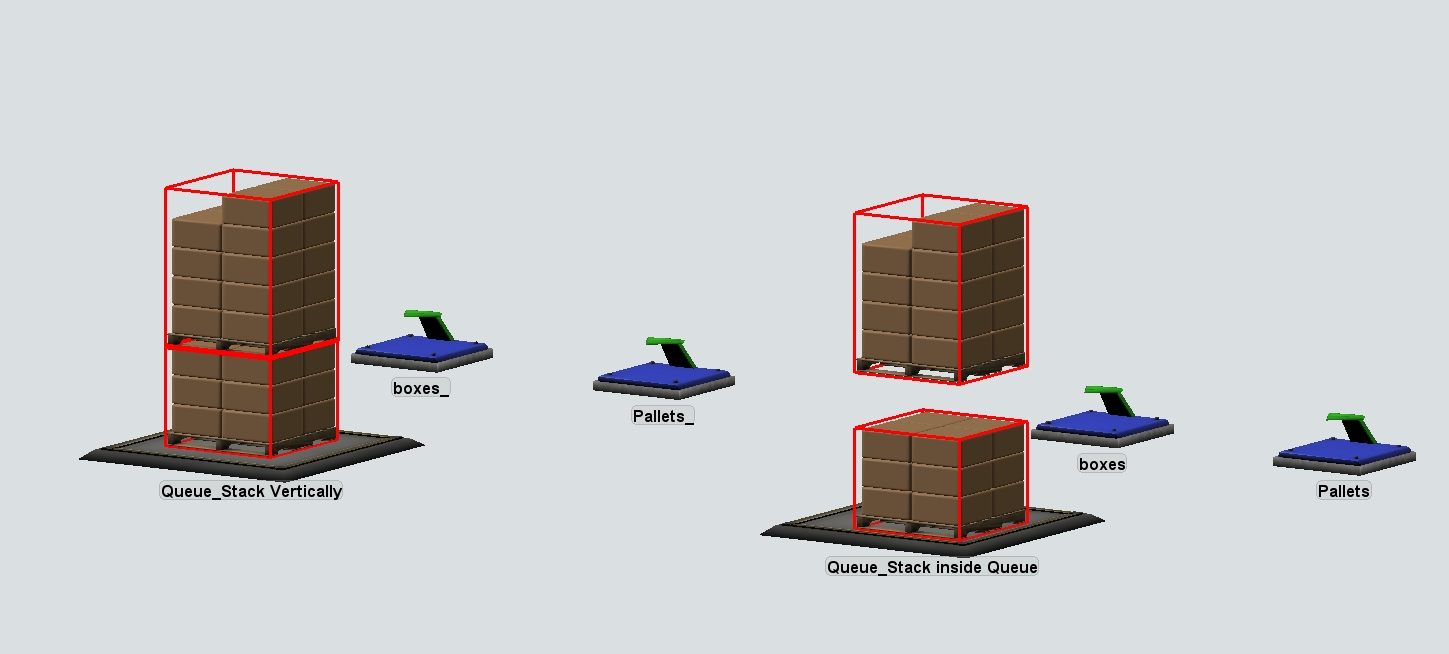I try to build a pallet variant which set its size to the maximum height of its content. I need it for the warehouse. The basic works. Unfortunately the stacking method of a queue behaves a bit strange. I move on entry boxes to the last entered pallet. If I stack pallets vertically it behaves correct. If I stack just inside the second pallet moves up, when the amount of boxes rises above the amount of boxes of the first pallet. As you can see in the picture, there is a gap between the red frames of pallets on the right. Why does this happen?

